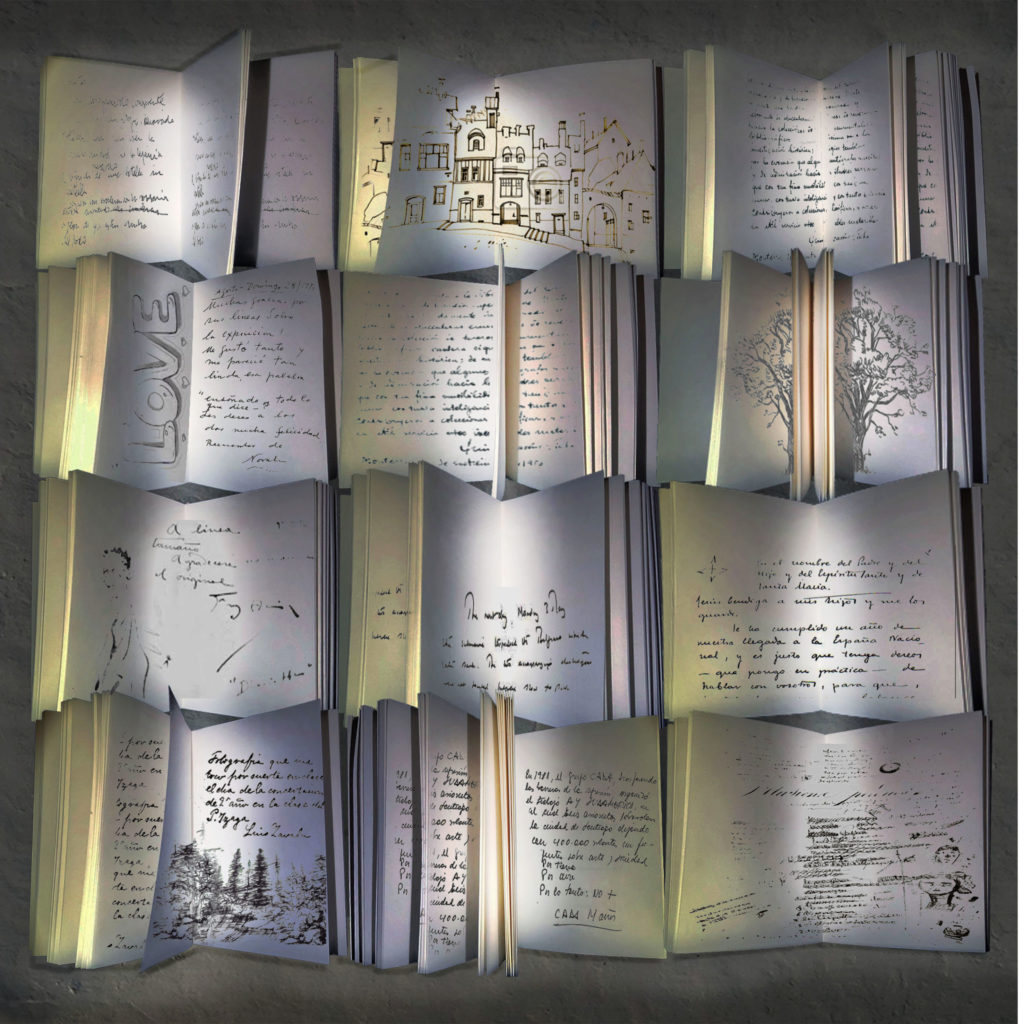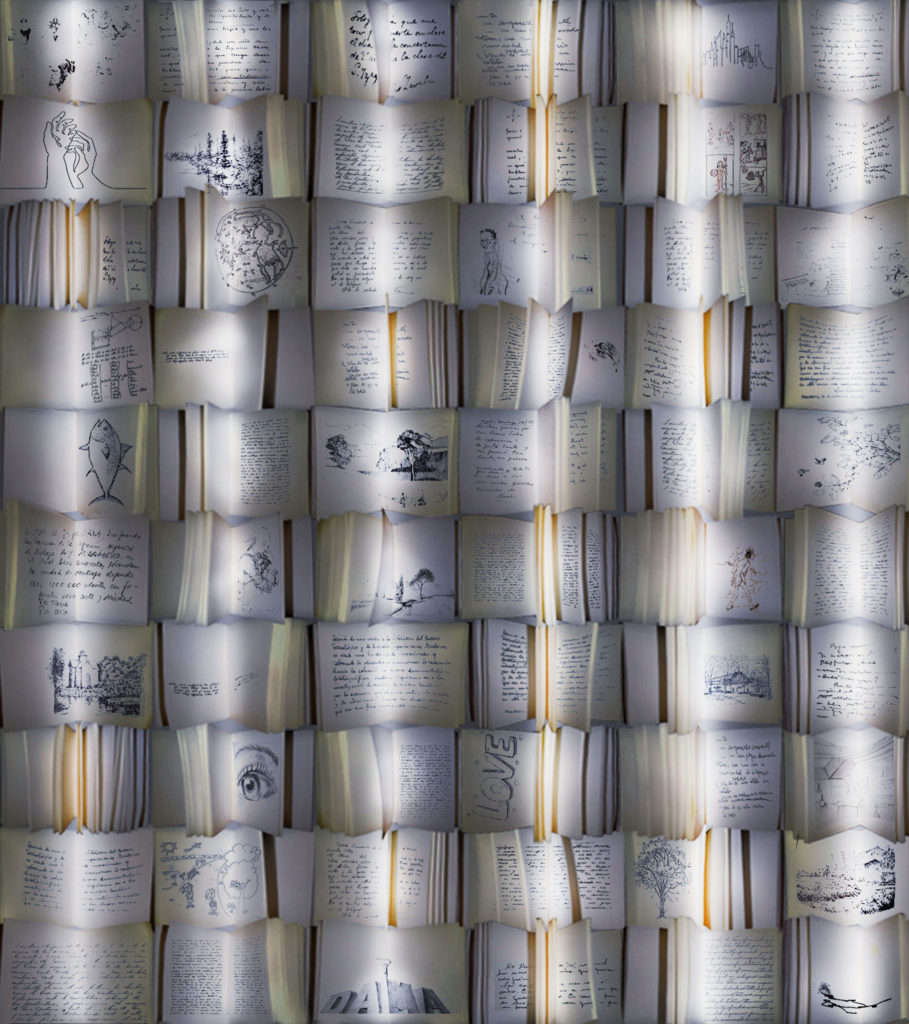Past editions/2021/Between blank pages, life goes on
Between blank pages, life goes on
Luzinterruptus
Spain
29, 30 and 31 October
From 8pm to midnight


“Between blank pages, life goes on” pays homage to the people who call home a Madrid of care, memory and reunion. This art installation brings to the forefront those who live and work in the city’s nursing homes and residences for the elderly. Upon these blank pages of light, the elderly have penned their hopes, fears, musings – from stories, letters and poems to words, drawings and doodles – forming a collage of memory. The piece was also made in collaboration with people with disabilities and the professionals who work with them on a daily basis. The city’s Forty Municipal Nursing Homes, belonging to the Department of Families, Equality and Social Welfare, have held writing sessions as part of this artistic intervention. What’s more, there will be guided tours of this installation and others during the Festival with 20 tours during the day and at night.
Luzinterruptus is an anonymous artistic collective. Since 2008, the group has worked in public spaces using light as a raw material and the dark as a canvas: ”We leave our beams of light lit… so others may turn them off for us…”
Location
Plaza Mayor: both a stage and witness to the history of the capital, this porticoed square stands at the heart of Madrid de los Austrias (Hapsburg Madrid) — the city’s old quarter and the ideal starting point for a visit to one of its most charming neighbourhoods. Its foundations are built upon the site of the former Plaza del Arrabal, where the city’s main market was located in the late 15th century, when Philip II of Spain’s court moved to Madrid. In 1617, the architect Juan Gómez de Mora was commissioned to homogenise the buildings of the square, which for centuries had played host to a multitude of events of varying sorts. The square recently celebrated its fourth centenary and has adapted, both in terms of purpose and structure, to the rhythm of city life.















